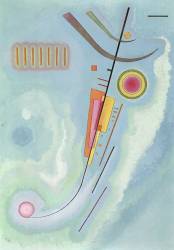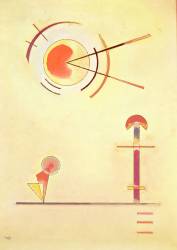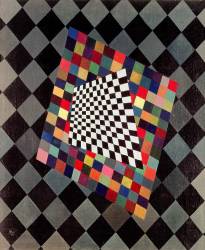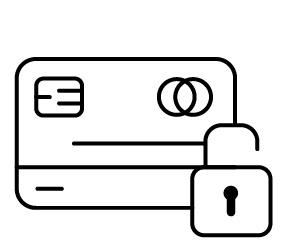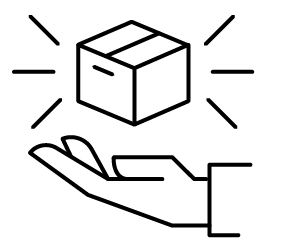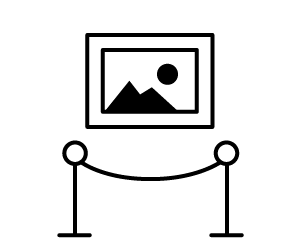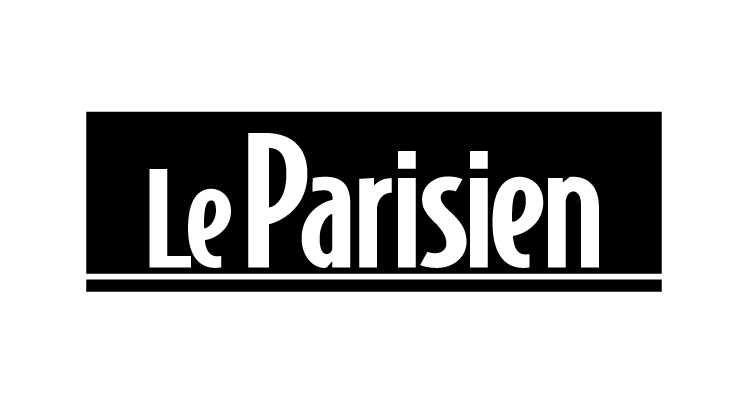Artwork of Wassily Kandinsky canvas prints & artprints
A forerunner in the development of contemporary abstract painting, Vassily Kandinsky was one of the first 20th-century artists to break away from figurative painting, drawing on a wide range of inspirations, from Impressionism and Post-Impressionism to Fauvism and Russian Constructivism, to create abstract works that completely disregard the representation of the visible.
Discover the most emblematic paintings by the leader of abstract art, with "Composition VIII", considered a major work of art from his post-war period, "Cercles Concentriques" and "Jaune Rouge Bleu", where color becomes the main actor in the feeling of the work, or the abstract watercolor "Sans Titre", one of the first paintings by the Franco-Russian artist in a totally abstract pictorial form.
Treat yourself to a catalog reproduction of Vassily Kandinsky, one of the most famous abstract painters in the history of art, and discover his biography.
Biography of Vassily Kandinsky.
Kandinsky's youth: a discovery of color.
Born in Moscow on December 4, 1866, Vassily Kandinsky came from a wealthy family where culture was present throughout his youth. After following his family to Odessa, on the shores of the Black Sea, the future painter - who would go on to become a pioneer of abstract painting - was introduced to art, particularly music, as well as drawing and painting by his aunt, who gave him lessons. Far from becoming a painter, Kandinsky went on to study law, where he excelled, and returned to Moscow, where, in 1895, he had the opportunity to see the Impressionist exhibition, which changed his perception of painting forever. Faced with the colorful paintings at this exhibition, and particularly Monet's "Les meules", Kandinsky saw in Impressionism the possibility of disregarding the context and figurative form used in Russian naturalism, and concentrating on color and the emotion it could bring. From then on, as an inner necessity, he decided to pursue his passion for art, and left Russia to settle in Munich, Germany, in 1896, to attend the Academy of Fine Arts.
Kandinsky's artistic development.
Strongly influenced in his studies by the Post-Impressionist art movement, in vogue in Europe at the beginning of the 20th century, Kandinsky moved closer to Abstract Expressionism, with canvases in which color increasingly took precedence over form, such as "Cavalier Bleu" (1903), "Couple à Cheval" (1907), or the landscapes of Murnau, where he lived, where each element is represented as a step towards abstraction, where the detail of the various elements takes a back seat to colorful motifs. With the painting on canvas "The Mountain" (1909), the Russian painter definitively moved away from classical figurative painting, and proposed an abstract vision of a landscape, in the vanguard of what the post-impressionist movement of the time could propose. It was only natural that Kandinsky should become a theoretician of the contemporary art of the time, and even more so of abstract art, by creating the "Blue Rider" ("Blaue Reiter") association with other pioneers of informal art, such as his friend Franz Marc. Together, they created a veritable almanac of all the new art forms, featuring abstract and modern artists, in order to show the predominance of spirituality over form in art, and thus champion expressionism in opposition to figurative art.
It was also during this period that Kandinsky created his first painting, truly considered the first of his abstract works, "Avec l'arc noir" (1912), which reveals nothing of reality, and can be read like an abstract musical score, where each form and color, seemingly chaotic, leads to emotion in an improvised and totally ordered setting. Composition VII (1913) is his major pre-war work, the culmination of his quest for abstraction.
Kandinsky: a desire to convey a vision of art.
Kandinsky wrote his first essays on the importance of color and the spiritual in art, always with a view to conveying his vision of art and the validity of the work of the Abstract Expressionists. In 1914, however, the outbreak of the First World War forced him to halt his activities and return to Russia. During this period of his life, he stopped painting, but in parallel with his contribution to art education and his involvement as director of the Moscow Institute of Art Culture, he produced a number of abstract drawings, some of which were used as sketches for future compositions. In 1921, he returned to Germany, where he was invited to teach at the Bauhaus in Weimar, alongside other abstract and post-impressionist painters such as Paul Klee and Franz von Stuck. Here, he taught the abstract dimension of his vision of art for over 10 years, with the importance of spirituality in painting always at the forefront. During these years, his technique also evolved, with geometric abstraction, inspired in particular by Russian constructivism of the early 20th century, taking an ever-greater place in his work. Geometry, with circles, lines and colors as the major pictorial elements of his post-war works, replaced organic forms, which increasingly disappeared from his abstract paintings, as in his oil on canvas "Composition 8" or his painting "Cercles dans un cercle" (Circles in a circle), painted in 1923.
Kandinsky's exile in France and his final years.
Faced with the rise of the Nazis in Germany, Vassily Kandinsky once again had to leave the country, as the powers that be closed the Bauhaus because the art taught there was considered "degenerate". He settled in France, taking up residence in a small studio in Neuilly sur Seine, where he continued his search for color and geometric forms, while remaining totally abstract from reality. In France, however, Kandinsky was not as successful as he had been in Germany. Art Deco and Cubism were in vogue, with works inspired by contemporaries such as Paul Cézanne, Picasso and Georges Braque, among others, and Kandinsky's lyrical abstraction no longer appealed to viewers. Right up to the end of his life, however, Kandinsky continued to paint, producing works in a less geometric style, with more organic forms inspired by nature, as in his painting "Bleu de ciel" (Sky Blue), painted in 1940. After receiving French nationality in 1939, and following his death in 1944, Kandinsky's work was widely disseminated and promoted, notably at the Centre Georges Pompidou and the Musée National d'Art Moderne in Paris, but also around the world in museums of contemporary art and painting, from Athens to Moscow and the Guggenheim Museum in New York. Today, Vassily Kandinsky is considered one of the fathers of abstract painting, and along with his contemporaries Piet Mondrian and his paint-by-number system, Jackson Pollock, and Malevich and his famous "Black Square on a White Background", he popularized abstract art, and challenged the way art was perceived by his predecessors.
Learn more about the life and the works of Wassily Kandinsky.












































